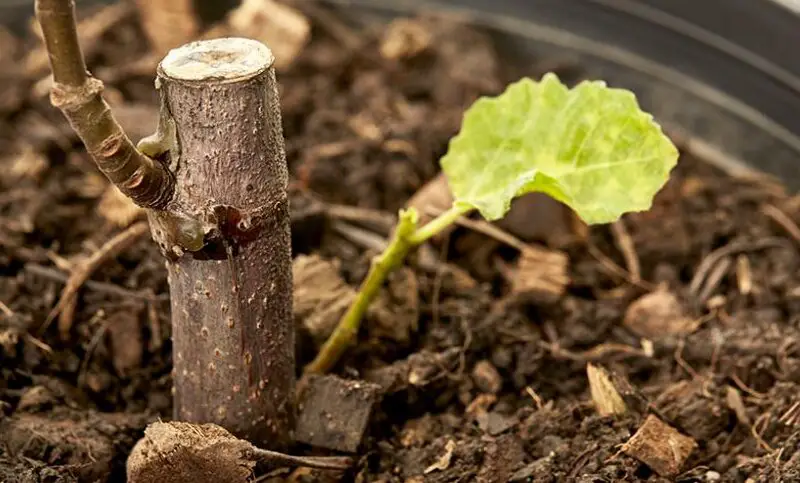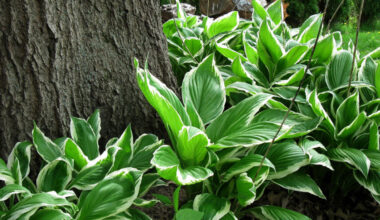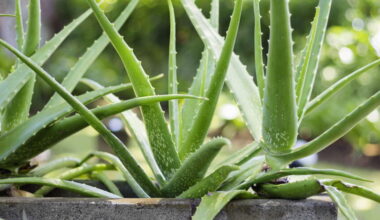To begin, collect suitable cuttings. Most trees are easily propagated by taking cuttings; choose a branch from an existing tree and cut it. The size of the cutting should be about 2-4 inches long and 2-5 mm thick. It is also possible to take larger cuttings but the chance of them taking root is low.
Contents
How to plant a tree branch
In the ground
- Proceed without delay, the branch must not dry out.
- With a stick, dig a hole 2 inches deep.
- Plant the cut side of the cutting in the ground.
- Water regularly with a sprayer.
In a bucket
- Transplant the cutting into small pots containing a light mixture of soil and sand.
- Dig a hole 2 inches deep with a stick.
- Water regularly with a sprayer.
Advantages: you can increase the humidity of your cutting by wrapping the pot in a plastic bag, and you can choose its location.
Disadvantages: you will then have to handle it to put it in the ground after it has taken root.
In water
- Place the cutting in an opaque pot containing water.
- Change the water regularly (every 5 to 7 days).
- Wait a few weeks.
- Then plant the cutting and its roots preferably in spring, early summer or early fall.
Optimal conditions
- In both cases, the cutting must be in a :
- bright (but not exposed to direct sunlight, mid-shade is ideal) ;
- humid and warm;
- sheltered from the wind.
- The roots will appear at the level of the eyes within 3 to 4 weeks.
Why cut a tree ?
By taking cuttings, we can multiply plants in order to transmit a variety to our environment, to reproduce it faithfully and thus to keep all the gustative qualities and characteristics of the mother plant. For fruit trees, if the cutting is the most accessible method of multiplication, it remains however random.
Which trees to cut ?
This technique is essentially reserved for small fruit bushes (currant, blackcurrant, blackberry, blueberry…) for which cutting is synonymous with success.
Fig, pomegranate, actinidia (kiwi) and grapevine are also easy to multiply by cuttings. For other fruit trees, apple, plum, cherry, pear, the result is not guaranteed but it costs nothing to try. And if it works, you will have made great savings.
When to cut a tree ?
In October and November, before the cold weather and when the leaves have fallen. This is the period when trees that are “making wood” rest and take root.
How to cut a tree ?
1. Select a tree
Select a healthy and vigorous tree, free of any disease. With clean, well-disinfected pruning shears, cut a year-old stem at an angle, just below a bud. Do not take hardwood or an extreme part of the stem that is still green and tender.
Eventually, cut the other end of the stem as well to prevent it from “stemming” rather than rooting. A shallow cut can also be made in the bark at the base of the stem to encourage root growth.
2. Collecting stems
The removed stem should have three buds (three “nodes”) and be 6 to 8 inches long. The few remaining leaves that will be put in the ground will be cut off flush, the others reduced by half.
3. Take several cuttings
Always take several cuttings of the same variety and, if possible, on different trees in order to multiply the chances of success.
4. Soak the stems in water
Soak 1 inch of the cuttings in water and then in the hormone powder. Shake off excess hormones.
5. Plant the branch
Place the stem in an earthen pot lined with a substrate composed of garden soil, special potting soil that will keep the cuttings moist and nourished, and sand that will aerate and drain the soil. You can also opt for a mixture of white peat and sand.
6. Prepare the buds
Put 2 buds in the soil and 1 outside. Fold the soil back so that the stem is straight and then pack it down. Water and then place the cutting in a semi-shaded place sheltered from the wind.
Keep the soil moist but not too wet.
A few weeks later, new shoots will appear, a sign of success. Do not replant immediately, give it time to develop. You can plant the following spring. No transplanting in summer.








